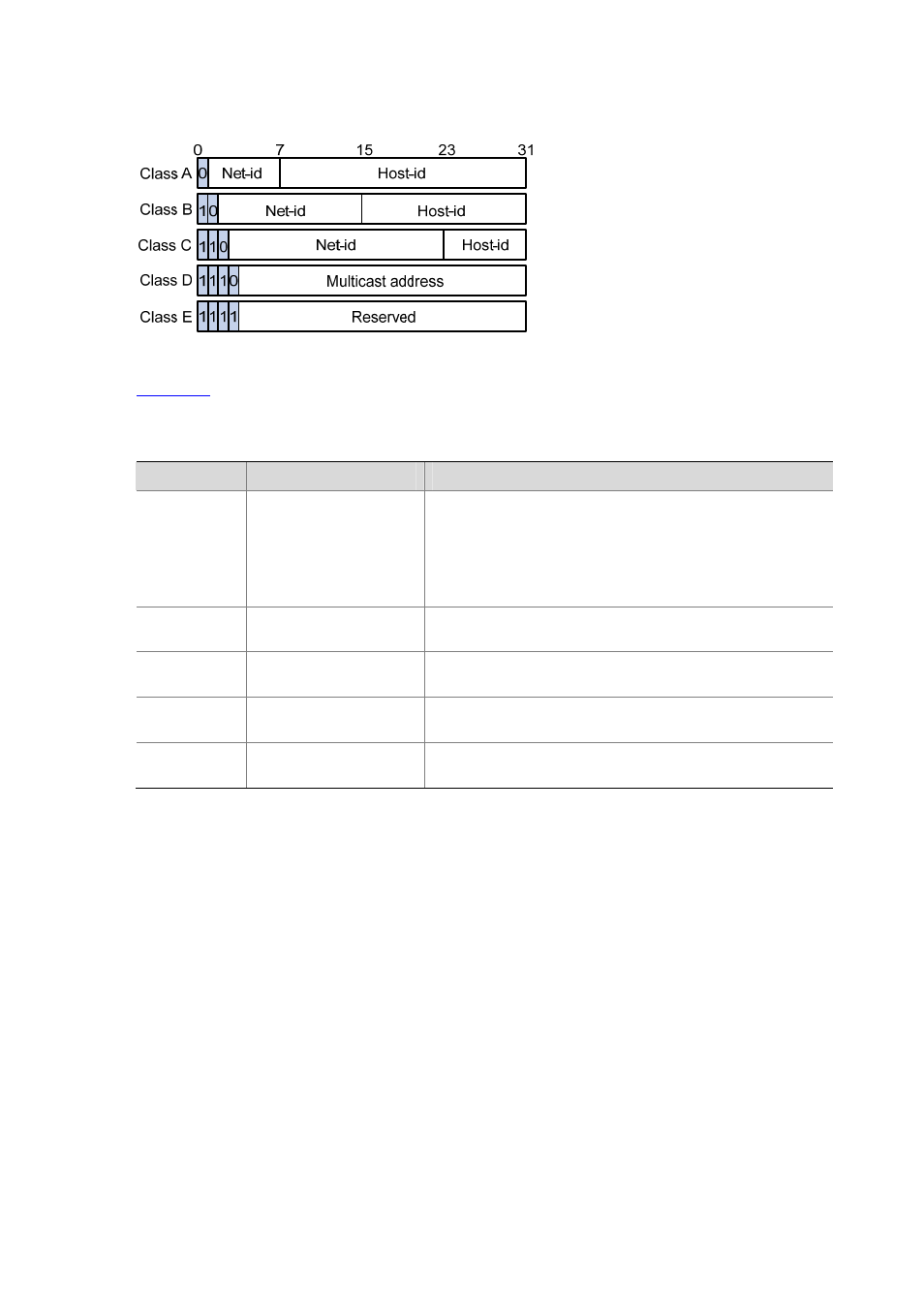Special case ip addresses, Subnetting and masking, 2 subnetting and masking – H3C Technologies H3C WX6000 Series Access Controllers User Manual
Page 89

10-2
Figure 10-1
IP address classes
describes the address ranges of these five classes. Currently, the first three classes of IP
addresses are used in quantity.
Table 10-1
IP address classes and ranges
Class
Address range
Description
A
0.0.0.0 to
127.255.255.255
The IP address 0.0.0.0 is used by a host at bootstrap for
temporary communication. This address is never a valid
destination address.
Addresses starting with 127 are reserved for loopback test.
Packets destined to these addresses are processed locally as
input packets rather than sent to the link.
B
128.0.0.0 to
191.255.255.255
––
C
192.0.0.0 to
223.255.255.255
––
D
224.0.0.0 to
239.255.255.255
Multicast address.
E
240.0.0.0 to
255.255.255.255
Reserved for future use except for the broadcast address
255.255.255.255.
Special Case IP Addresses
The following IP addresses are for special use, and they cannot be used as host IP addresses:
z
IP address with an all-zero net ID: Identifies a host on the local network. For example, IP address
0.0.0.16 indicates the host with a host ID of 16 on the local network.
z
IP address with an all-zero host ID: Identifies a network.
z
IP address with an all-one host ID: Identifies a directed broadcast address. For example, a packet
with the destination address of 192.168.1.255 will be broadcasted to all the hosts on the network
192.168.1.0.
Subnetting and Masking
Subnetting was developed to address the risk of IP address exhaustion resulting from fast expansion of
the Internet. The idea is to break a network down into smaller networks called subnets by using some
bits of the host-id to create a subnet-id. To identify the boundary between the host-id and the
